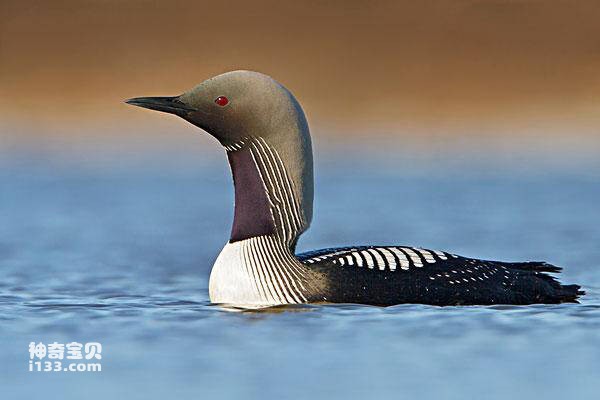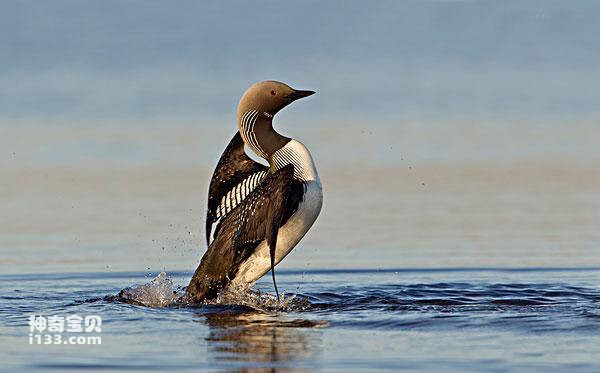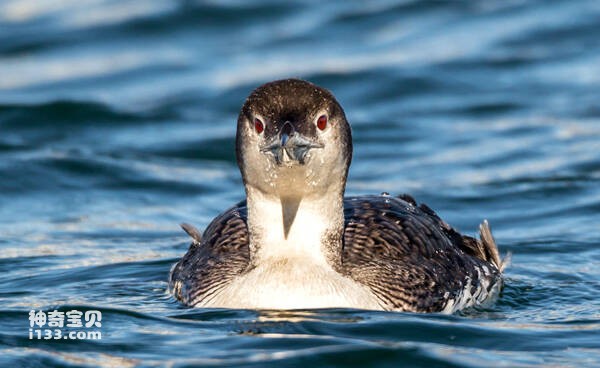Gavia pacifica
IUCN
LCBasic Information
Scientific classification
- name:Gavia pacifica
- Scientific Name:Gavia pacifica,Pacific Loon
- Outline:Waterfowl
- Family:
Vital signs
- length:60-68CM
- Weight:1.8-2.5kg
- lifetime:No textual research information is available
Feature
The individual is slightly smaller than the black-throated loon, the bill is straight, slightly thinner and shorter than the black-throated loon, and the body is slender
Distribution and Habitat
The Pacific loon breeds in the Indigirka River in northeast Siberia, east through the Karema River, the Anadell Basin, and the Chukchi Peninsula, through St. Lawrence Island and the Aleutian Islands in the Bering Sea to Alaska and Kodiak Island in the south, continuing east through Canada to Hudson Bay and Baffin Island, and south to southern Canada to James Bay and the Ungava Peninsula. Wintering in the southern waters of breeding grounds, the Russian Far East, the Kuril Islands, California and the Liaodong Peninsula of China and the southeast coast.
Distribution in China: Northeast (Ussuri River), Liaodong Peninsula (Liutun), Shandong (Jiaozhou), Jiangsu (Lianyungang Che Niushan).
Native distribution: Canada, Japan, Mexico, United States.
Undetermined distribution: North Korea, South Korea.
The Pacific loon breeds in the open lakes, rivers and large ponds of the Arctic tundra and the rivers and large lakes of the forest margins of the subArctic region, and in the wint
Appearance
The upper cover and tail feathers are black, with green metallic luster; The upper back and shoulders are densely covered with rectangular white patches, arranged in a valley-like pattern; Wing overlying feathers with small white spots; Chin, larynx and foreneck are black with purple luster, larynx has a discontinuous transverse band composed of short white stripes; The side of the neck has black and white longitudinal stripes; Chest, abdomen white, body side black, underwing cover white; Axillary white, apex with dark brown plumage. [2]
Winter plumage forehead, head to back neck black brown; Chin, throat, under eye and front neck white, with the black line of the back neck, form a sharp contrast; Back to tail dark brown, with not obvious grayish-white stripes; The throat has a thin dark brown band. The lower body is white, the chest side has a fine black longitudinal stripe; Dark brown on both sides.
Young birds are similar to winter feathers, the back and shoulders have pale fe
Details
The Pacific Loon (Gavia pacifica) is a large water bird in the family Lobiidae of the order Lobiidae. The Pacific Loon is very similar to the black-throated loon, and some scholars have long regarded it as a subspecies of the black-throated loon. However, Portenko (1939) and Bailey (1948) showed that the breeding areas of Pacific Loon and black-throated Loon overlapped in the Anadell Basin of eastern Siberia and Alaska, and no intermediate type had been seen for a long time, so most scholars believed that it should be regarded as an independent species.

Pacific loons live in pairs or small groups, and occasionally in single species. Good at swimming and diving, floating on the surface of the water, the body submerged part of the water more, the tail close to the water, sometimes even the whole body submerged in the water, leaving only the head and neck to swim on the water, and constantly swinging the head around, observing around, when there is danger, all submerged underwater, escape through diving. It can also fly, and fly quickly, but it is more difficult to take off on the water, and generally does not fly.
Pacific loons feed primarily on fish, but also on aquatic invertebrates such as insects and their larvae, crustaceans, and mollusks. By diving for food, very good at diving, by the stroke of the foot, but also by the stroke of the wings to speed up the pursuit of fish. Insects and small fish are eaten underwater, while larger foods are eaten at the surface. Usually silent.

In spring, Pacific loons leave their wintering grounds and migrate north from late March to late April, arriving at their breeding grounds in late May. The fall begins in September-October and reaches the east coast of China in November-December. Most of them migrate in pairs or small groups, passing the Nenjiang River and the Wusuli River, and overwintering on the Liaodong Peninsula and the eastern coast.
Pacific loon breeding season June - July. Breeds in Arctic and subArctic tundra and tundra forests, nesting on coasts, estuaries, rivers and lakes. The nest is mostly made of dead aquatic plants, and is extremely simple. Each clutch lays 1-2 eggs, and the size of the eggs is 68.5-87 mm ×44-51 mm, with an average of 75.7 mm ×47 mm. Older chicks usually have priority in the nest, and during periods of food scarcity, parent birds usually feed older chicks first, while younger chicks may die. The chicks are completely dependent on their parents for the first five to seven weeks, and by about eight weeks will begin to exercise their ability to catch fish and live independently. Parent birds have protective behavior, shielding their chicks with their wings to prevent predators from attacking them. During breeding, male birds compete for females with aggressive behavior, often striking their rivals with their beaks or even leaving fatal wounds.

Rare in China, occasionally reported. It was recorded that a female bird was collected near the coast of Xiaoping Island in Dalian on December 1, 1983. In 2006, Wetlands International estimated the global population of Pacific loons at 930,000-1,600,000 individuals. In 2009, population estimates in some countries were: 50-10,000 Pacific loons wintering in Japan; There are 100-10,000 pairs of adult birds and 1,000-10,000 individuals wintering in Russia.
The population density of Pacific loons is relatively lower during the winter and higher during the breeding season. The study found that some of the chemicals in Pacific loons may have come from pollution in their ecosystems, and those pollutants ended up in Pacific loons higher up the food chain. Pacific loons have adapted relatively well to human pressures, but their habitats are becoming smaller and smaller due to human occupation.
Listed in the Red List of Species of China (2004), assessed grade - not assessed (NA, China is the margin of the range).
It is listed on the IUCN Red List of Threatened Species (IUCN) 2018 ver 3.1 - Species not at Risk (LC).
Protect wild animals and eliminate wild meat.
Maintaining ecological balance is everyone's responsibility!








